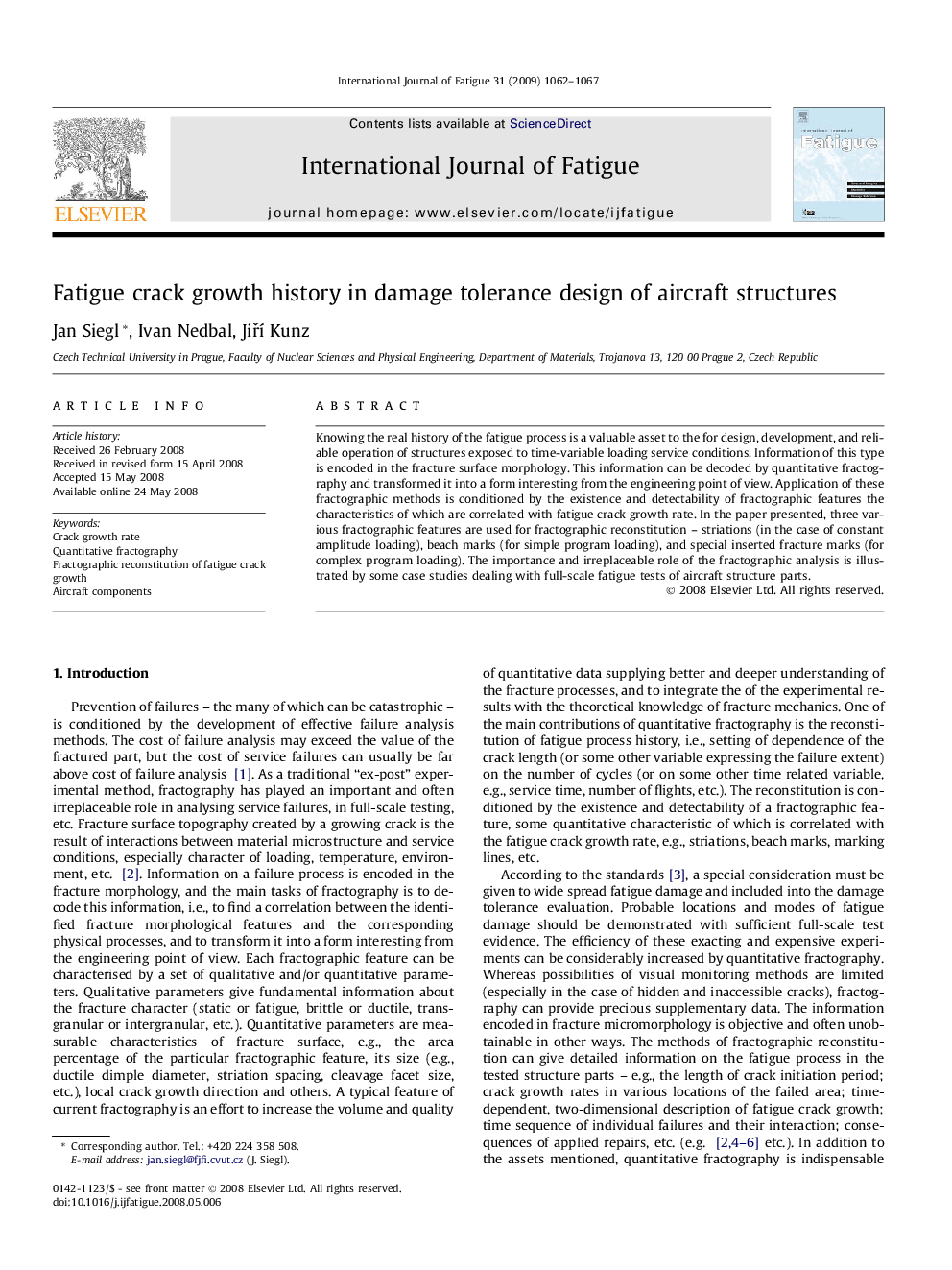| کد مقاله | کد نشریه | سال انتشار | مقاله انگلیسی | نسخه تمام متن |
|---|---|---|---|---|
| 775771 | 1463827 | 2009 | 6 صفحه PDF | دانلود رایگان |

Knowing the real history of the fatigue process is a valuable asset to the for design, development, and reliable operation of structures exposed to time-variable loading service conditions. Information of this type is encoded in the fracture surface morphology. This information can be decoded by quantitative fractography and transformed it into a form interesting from the engineering point of view. Application of these fractographic methods is conditioned by the existence and detectability of fractographic features the characteristics of which are correlated with fatigue crack growth rate. In the paper presented, three various fractographic features are used for fractographic reconstitution – striations (in the case of constant amplitude loading), beach marks (for simple program loading), and special inserted fracture marks (for complex program loading). The importance and irreplaceable role of the fractographic analysis is illustrated by some case studies dealing with full-scale fatigue tests of aircraft structure parts.
Journal: International Journal of Fatigue - Volume 31, Issue 6, June 2009, Pages 1062–1067